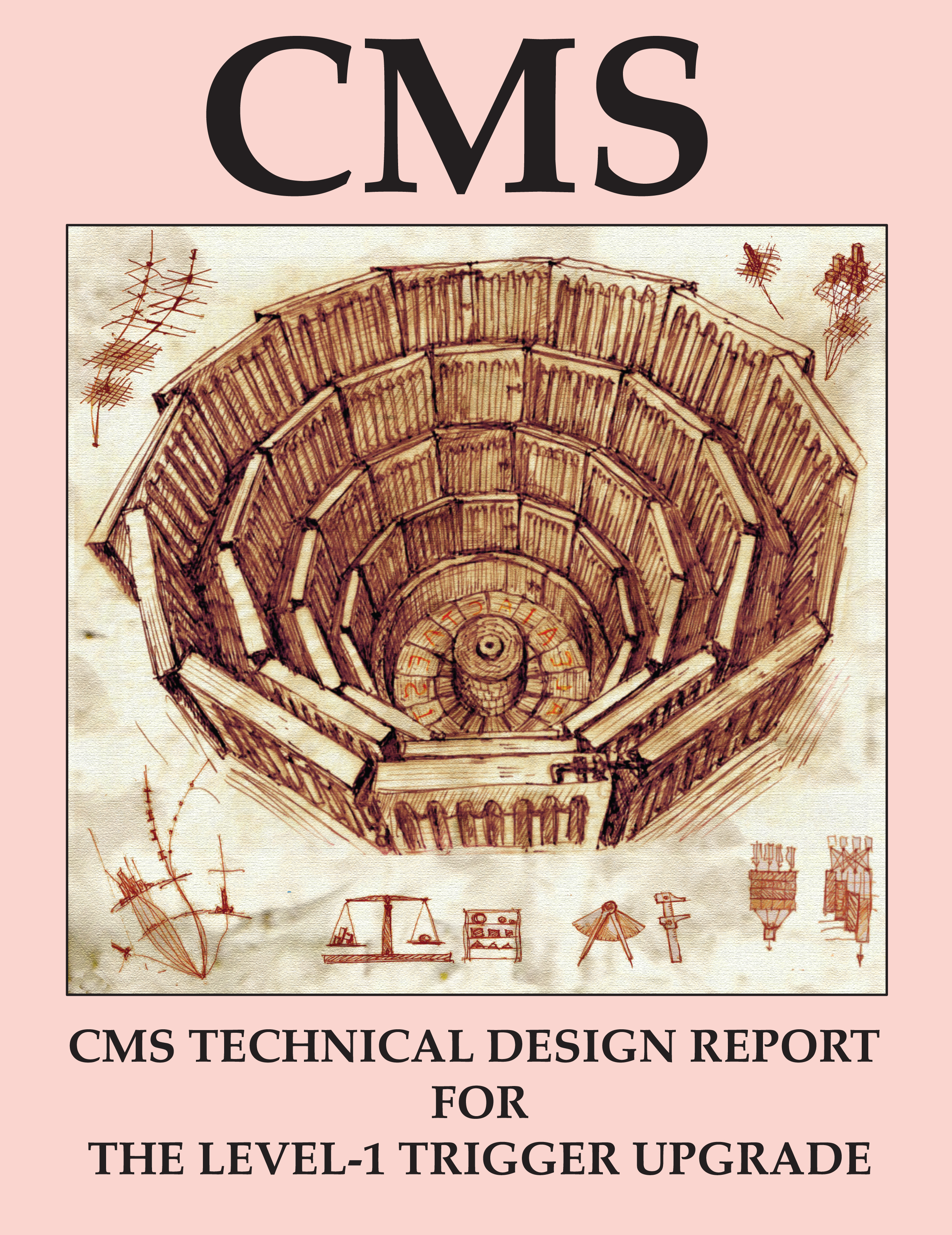
CMS is in many ways a living entity, undergoing change from time to time, with components being replaced or upgraded as their ability to handle the LHC's collisions reduces. When the LHC returns to action in 2015, the collision-energy will be increased from 8 TeV to 13 TeV, with the luminosity expected to go up from 0.75 x 1034 cm−2s−1 to 2 x 1034 cm−2s−1. These operating environments will provide new challenges for the CMS Trigger system to cope with.
When the LHC is colliding protons, CMS detects hundreds of millions of collisions each second, only a handful of which are useful for physics studies. The job of the CMS Trigger is to select only the few hundred useful events while discarding the rest. The first level of the two-stage trigger, known as the Level-1 (or L1) Trigger, selects a maximum of a hundred thousand events each second for more detailed selection by the second level, known as the High-Level Trigger. Now, the increases in collision energy and luminosity following Long Shutdown 1 (LS1) would mean that the L1 Trigger would select six times as many events as it currently does, in order to maintain the same number of useful collisions ultimately stored for detailed analysis. This would be an impossible task for the detector data-acquisition electronics, and so CMS will upgrade its L1 Trigger over the next few years to improve its discrimination of interesting physics collisions and operate within the predefined data-acquisition rate. These proposed upgrades were formally presented to the LHC Experiments Committee (LHCC) in the form of a Technical Design Report on 11 June and subsequently approved by the LHCC.
The technological implementation of the upgrades revolves around standardisation and flexibility. The standardisation comes by means of using large, modern Field-Programmable Gate Arrays (FPGAs), which will provide the needed flexibility by allowing the implementation of reconfigurable and highly sophisticated algorithms. This standardisation will help to minimise the future maintenance of the overall system and to share expertise across the Level-1 Trigger group. High-bandwidth optical data communication links also allow the system to be highly reconfigurable to accommodate future detector and electronic upgrades to the CMS experiment.
Probing the Higgs boson
Study of the newly discovered Higgs boson is of paramount importance to the physics programme at CMS. Now that we've observed something new, we have to understand its properties in greater detail. One of the five key “decay modes” for this boson is the decay into two τ (tau) leptons. The current L1 Trigger will suffer from low efficiency and a high number of fake signals in this channel in the period after LS1. The implementation of new logic in Triggers for this particle would result in a threefold improvement in the detection of τ leptons in the Higgs-to-two-taus channel.
Improvements in precision measurements and particle identification
Proton collisions produce a spray of particles in virtually all directions inside the CMS detector. Valuable signals of new physics include observing isolated particles such as τ leptons, muons, electrons or photons, away from the rest of the collision debris. The current L1 Trigger does not have an effective isolation capability for muons, and higher pile-up in future runs will impact the current isolation algorithm for τ leptons, electrons and photons. CMS has therefore investigated the possibility of adding muon isolation to the L1 Trigger and accounting for the pile-up in the isolation of all particles. The upgraded L1 Trigger will also seek to prevent the misidentification of low-momentum muons as high-momentum ones.
The high-pileup environment also complicates the measurement of jets of hadronic particles produced in the collisions. The new L1 Trigger will look at each collision “event” and subtract the contribution from the pile-up to reduce the number of fake jets.
Global Trigger
In addition to specific triggers for specific subdetectors of CMS, there exists a consolidated Global Trigger, which takes into account information from various subsystems all together before making a decision on which collision events to retain. The upgrade to this Global Trigger will allow it to utilise more algorithms at a time than previously, allowing CMS to be more flexible in how it handles the Trigger bandwidth. CMS also will be able to match different objects — muons with jets, for example — with higher resolution and efficiency and be able to calculate more sophisticated quantities such as the mass of a pair of objects.
Part of the L1 Trigger upgrade will be done during LS1, the rest before LS2. When the LHC resumes collisions in 2015, CMS plans to keep the present triggers running and commision the news ones simultaneously. Lots of comparisons will be done between both to test everything from technical implementation to whether the new triggers perform better, before the older of the two will be turned off by LS2. The upgrades programme will ensure that CMS continues its excellent performance for years to come.
— Darin Acosta and Achintya Rao
- Log in to post comments

